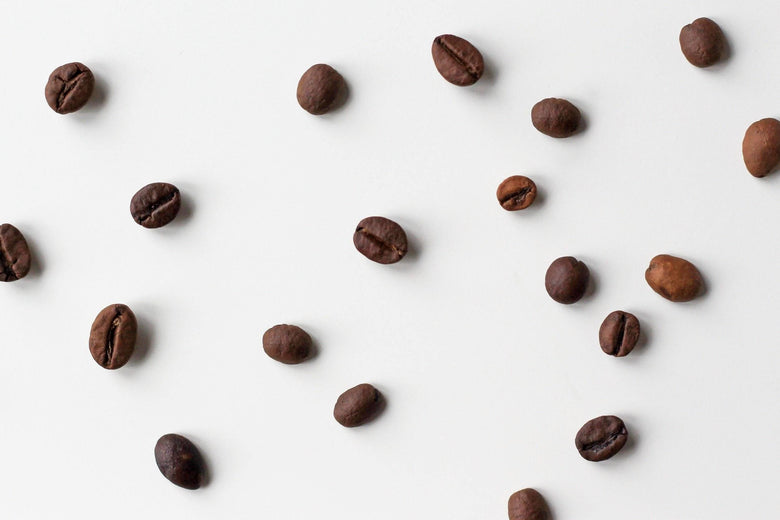A Starter’s Guide to Understanding SOE Single Origin Espresso
A Starter’s Guide to Understanding SOE Single Origin Espresso
Blog Article
Coffee Beans Uncovered: Discovering the Tricks of Espresso and Blended Coffee Beans
When you believe concerning coffee, what comes to mind? Is it the abundant fragrance of espresso or the complexity of a well-crafted mix? Recognizing the subtleties of coffee beans can change your experience.
The Origins of Espresso: A Historic Point Of View
Although espresso is now a staple in coffee culture worldwide, its origins map back to the very early 20th century in Italy. You could be shocked to find out that the development of espresso was driven by a need for speed and effectiveness. In 1901, Luigi Bezzera patented the first coffee device, intending to brew coffee faster than conventional techniques. This development promptly recorded the attention of Italian coffee drinkers, resulting in the espresso bars we are acquainted with today.
Recognizing Coffee Beans: Ranges and Attributes
When you consider espresso, it's important to acknowledge the different bean selections and their special tastes. Each type brings a distinctive character to your mug, influenced by aspects like roast levels. Understanding these aspects can elevate your coffee experience considerably.
Coffee Bean Varieties
As you check out the world of espresso, you'll promptly find that not all beans are created equivalent; each range brings its own special flavors and features to your cup. One of the most popular kinds consist of Arabica and Robusta. Arabica beans are understood for their smooth, nuanced tastes and reduced caffeine material, making them a preferred amongst coffee lovers. On the various other hand, Robusta beans load a stronger punch with greater high levels of caffeine and an extra bitter taste, often preferred in blends for their crema-enhancing qualities. You may also experience specialty beans like Liberica and Excelsa, which offer unique accounts and are much less typical. Each selection provides something different, so experimenting will help you discover your ideal espresso.
Flavor Profiles Explained
Comprehending the taste profiles of various espresso beans can boost your coffee experience. Each bean range provides distinct characteristics that influence scent, mouthfeel, and taste. Arabica beans frequently provide a sweeter, extra complex flavor with hints of fruit and flower notes, while Robusta beans tend to be bolder, with natural and nutty undertones.
When you check out single-origin beans, you may uncover distinct regional flavors-- Central American beans may be intense and citrusy, whereas Italian blends typically deliver abundant, chocolatey notes.
Roast Degrees Effect
Roast degrees play an essential duty in shaping the flavor and scent of coffee beans, influencing your total coffee experience. With light roasts, you'll discover intense level of acidity and more pronounced fruity notes. As you transfer to tool roasts, you'll enjoy a balanced account that showcases sweetness and complexity. Dark roasts, on the other hand, typically existing rich, bold tastes with a smoky coating, however they can mask the beans' fundamental characteristics. Recognizing these roast levels aids you select the coffee that fits your preference preferences. Explore different roasts can bring about fascinating discoveries, enhancing your admiration for espresso. Do not think twice to discover numerous roast degrees and locate your excellent mug!
The Art of Mixing: What Makes Blended Coffee One-of-a-kind
What makes mixed coffee so interesting? It's everything about the art of incorporating beans from different origins, roast levels, and taste accounts. When you blend, you're not simply blending; you're creating an unified balance that highlights the staminas of each bean. You can try out numerous combinations to improve acidity, sweetness, and body, causing a brew that's richer and extra complicated than a single-origin coffee.
Blending also permits you to provide to diverse taste choices. You can craft a blend that's smooth and smooth or one that's vibrant and robust, relying on your target market. Plus, blending can help preserve consistency, supplying a reliable taste experience no matter of seasonal variations in beans. So, whether you're a barista or a home brewer, mastering the art of blending opens a world of creativity and flavor opportunities, making your coffee experience absolutely one-of-a-kind - SOE.
Taste Profiles: Sampling Notes of Espresso vs. Blended Coffee
Combined coffee offers a world of flavor opportunities, but when it involves coffee, you're taking a look at a more concentrated experience. Espresso typically showcases strong, abundant flavors with a thicker mouthfeel. You might observe notes of dark delicious chocolate, caramel, or even tips of fruit, depending on the beans. The intensity can be both invigorating and pleasing.
On the other hand, combined coffee presents a complicated tapestry of flavors. You can explore a selection of sampling notes, from pleasant and nutty to flower and fruity. Each blend can provide something unique, commonly incorporating beans from different regions to develop a well balanced profile.
While espresso delivers a strike, combined coffee invites you to enjoy the subtleties. Whether you prefer the durable strength of coffee or the intricate tastes of mixed coffee, each cup tells its very own story, waiting for you to find.
Brewing Techniques: Improving Your Espresso Shot
To attain the excellent espresso shot, comprehending the brewing methods is crucial, as also small modifications can considerably find out affect the flavor and quality. Beginning by utilizing fresh, high-grade coffee beans; grind them simply prior to brewing for optimum taste. Go for a great grind, concerning the consistency of table salt, to guarantee perfect extraction.
Next, pay attention to your water temperature; it ought to be in between 195 ° F to 205 ° F. Too as well cold or warm can wreck your shot. Usage concerning 18-20 grams of coffee for a dual shot, and tamp it evenly with strong stress to develop a consistent puck.
A longer extraction can lead to resentment, while also short can result in sour flavors. Exercise these methods continually, and you'll refine your abilities, achieving that abundant, robust espresso shot you hunger for.
The Function of Roast Levels in Coffee and Blended Coffee
After grasping the brewing methods for espresso, it's time to consider just how roast levels influence the flavor account of your coffee. The roast level can dramatically change your coffee's body, scent, and preference. Light roasts often tend to highlight the coffee's origin, providing bright acidity and fruity notes, while tool roasts equilibrium level of acidity and sweetness, producing you can try this out a well-rounded taste. Dark roasts, on the various other hand, highlight bold, rich flavors with lower acidity, frequently creating chocolate or smoky touches.

Discovering Sustainability: Ethical Sourcing of Coffee Beans
When you select coffee, you're not simply choosing a flavor; you're making a choice regarding the impact on farmers and the atmosphere. Understanding Fair Trade methods, natural farming techniques, and accreditation criteria can aid you sustain lasting coffee sourcing. Let's check out exactly how these aspects contribute to a much more ethical coffee experience.
Fair Trade Practices
Fair Trade techniques play an essential function in making sure that coffee beans are sourced fairly and sustainably. When you select Fair Trade coffee, you support farmers who receive reasonable wages and job in risk-free problems. By choosing for Fair Profession brand names, you're not just enjoying an abundant mug of coffee; you're making a favorable influence on the lives of those that expand it.
Chemical-free Farming Methods
As you check out the world of honest coffee sourcing, natural farming methods become a vital element of sustainability. By selecting organic coffee, you sustain methods that focus on dirt wellness, biodiversity, and all-natural ecological communities. Farmers stay clear of artificial chemicals and fertilizers, depending instead on all-natural garden compost and plant turning to boost soil fertility. This not only safeguards the setting yet additionally improves the high quality of the coffee you delight in. Chemical-free farming motivates regional wild animals and promotes a balanced environment, reducing the possibilities of disease and insects. Additionally, it often leads to more powerful, much healthier coffee plants, leading to richer flavors in your cup. When you decide for natural coffee, you're making a conscious option that benefits both the world and your taste buds.
Accreditation Specifications Explained
Recognizing certification requirements is necessary for any individual interested Web Site in fairly sourced coffee. These standards, such as Fair Profession, Rain Forest Alliance, and USDA Organic, warranty that coffee is grown under sustainable techniques. You support farmers that adhere to honest labor techniques and environmental defense. when you choose accredited coffee.
Fair Trade certification concentrates on offering reasonable wages and functioning problems, while Rainforest Partnership emphasizes biodiversity and community conservation. USDA Organic ensures that no artificial fertilizers or chemicals are utilized. By familiarizing on your own with these certifications, you can make enlightened choices that align with your values. Following time you go to your neighborhood café or grocery shop, try to find these tags, and feel great recognizing your coffee acquisition positively affects neighborhoods and the environment.
Often Asked Questions


How Does Altitude Influence the Development of Coffee Beans?
Elevation impacts coffee bean development by affecting temperature and climate. Greater elevations commonly create denser beans with more complex flavors, while reduced altitudes can cause faster development but much less tasty end results. You'll taste the distinction!
What's the Difference Between Arabica and Robusta Beans?
Arabica beans are sweeter and a lot more complicated, while Robusta beans have a more powerful, harsher taste with higher caffeine material. You'll find Arabica favored for specialty coffees, whereas Robusta's frequently utilized in instantaneous coffee and espresso blends.
Can Coffee Beans Go Negative or Lose Taste With Time?
Yes, coffee beans can spoil and shed taste in time. If you save them improperly or maintain them too long, they'll wither. Always maintain your beans in an impermeable container far from light and moisture.
What Are the Wellness Benefits of Drinking Coffee?
Consuming alcohol coffee boosts your energy, enhances mental quality, and might decrease the threat of specific conditions. It's rich in antioxidants, sustains metabolism, and can enhance state of mind, making it a useful selection for your daily routine.
Just How Does Water Top Quality Impact Espresso Removal?
Water quality greatly impacts espresso extraction. It impacts the solubility of tastes and oils, affecting preference and aroma. Utilizing filtered water can boost your espresso, guaranteeing a well balanced and delightful cup whenever you make.
Coffee Beans Uncovered: Uncovering the Keys of Coffee and Blended Coffee Beans.
Understanding the taste profiles of various coffee beans can elevate your coffee experience.Roast levels play a crucial role in forming the flavor and scent of espresso beans, influencing your general coffee experience (SOE).Mixed coffee offers a globe of taste possibilities, but when it comes to espresso, you're looking at an extra focused experience.After mastering the developing strategies for coffee, it's time to ponder how roast levels affect the flavor profile of your coffee
Report this page